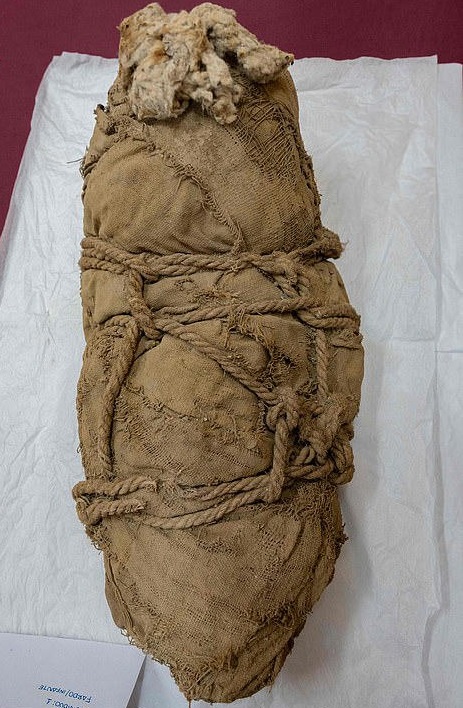
In a huge dig at the pre-Incan Cajamarquilla complex east of Lima, Peruvian archaeologists discovered the remains of eight children and 12 adults who were perhaps sacrificed around 800-1,200 years ago, the team revealed on Tuesday.

The remains were discovered outside an underground tomb where a team from Peru’s San Marcos University discovered an ancient corpse tied with ropes in a foetal posture in November. The victims, some mummified and others bones, were wrapped in various layers of fabrics as part of an ancient pre-Hispanic rite, and were presumably sacrificed to accompany the main mummy, according to archaeologist Pieter Van Dalen.
‘For them, death was not the end, but rather a transition to a parallel world where the dead lived. They thought that the souls of the dead became protectors of the living’, Van Dalen told a news conference.

The burial arrangement was familiar to Van Dalen, who cited the tomb of the Lord of Sipán, a king who lived 1,700 years ago and was discovered alongside infants and adults who had been slaughtered to be buried with him. ‘This is precisely what we think and propose in the case of the mummy at Cajamarquilla, which would have been buried with these people. As part of the ritual, evidence of violence has been detected in some of the mummies’, he said.
Also Read: Fossil of giant flying reptile found in Scotland

Yomira Huamán, a member of the team said that musical artefacts such as the ‘zampoa’, an Andean wind instrument with numerous wooden tubes in the shape of flutes, were discovered alongside burial goods. ‘Our investigations suggest the mummy of Cajamarquilla would be a man of approximately 35 years. This character did not have any organs, meaning he was eviscerated after death’, she said.
Hundreds of archaeological sites dating from before and after the Inca Empire, which ruled the southern portion of the continent 500 years ago, from southern Ecuador and Colombia to central Chile, may be found in Peru. ‘The complex has only been excavated 1%. I think Cajamarquilla has much more to say, much more to tell us’, Huamán added.

Post Your Comments